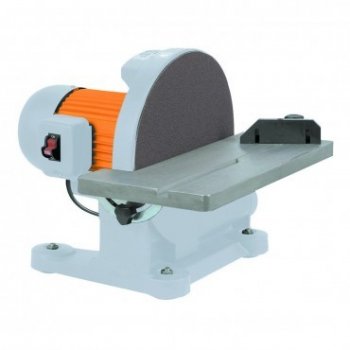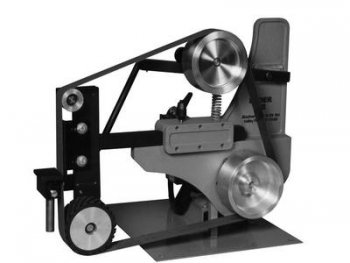Lerch
Well-Known Member
Hi all
Over the last 2 years i have done pretty much only convex ground blades with the grind tapering all the way to the top of the spine. Since this is the way i have been doing things I dont have a lot of perfectly flat surfaces on my knives, i think it gives the knife a bit of a organic or natural look and i like it. anyway I have been wanting to do some more field/tactical knives with either flat or hollow ground edges. to develop the good sharp and crisp lines I always think about on tactical knives i need to have the flats of the blade well very flat. typically in the knives i have been doing only the area around the bolsters is flat and i do this by just pressing this area into the flat platen on my grinder but this usually rounds the edges a little bit where i bend the belt in. this method doesnt seem to work real well for long flat areas like i am wanting.
the only idea i have been able to come up with is to use a flat disc grinder and swap out the disc from 40 grit, 120 grit and finally 240 grit . I only have one disc grinder so this would be kind of a pain but I dont have any other ideas. any suggestions ??
thanks
steve
Over the last 2 years i have done pretty much only convex ground blades with the grind tapering all the way to the top of the spine. Since this is the way i have been doing things I dont have a lot of perfectly flat surfaces on my knives, i think it gives the knife a bit of a organic or natural look and i like it. anyway I have been wanting to do some more field/tactical knives with either flat or hollow ground edges. to develop the good sharp and crisp lines I always think about on tactical knives i need to have the flats of the blade well very flat. typically in the knives i have been doing only the area around the bolsters is flat and i do this by just pressing this area into the flat platen on my grinder but this usually rounds the edges a little bit where i bend the belt in. this method doesnt seem to work real well for long flat areas like i am wanting.
the only idea i have been able to come up with is to use a flat disc grinder and swap out the disc from 40 grit, 120 grit and finally 240 grit . I only have one disc grinder so this would be kind of a pain but I dont have any other ideas. any suggestions ??
thanks
steve




